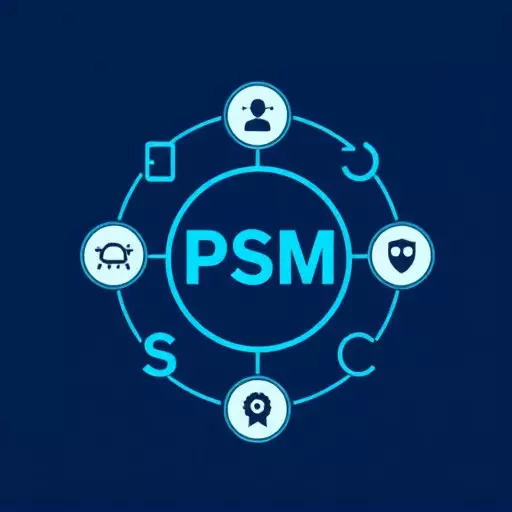PSM (Process Safety Management) compliance audits are essential for maintaining stringent safety standards in hazardous process handling. These audits involve a structured review of facility operations, documentation, and data, identifying deviations from best practices and regulations. Key steps include understanding organizational processes, conducting interviews and inspections, gap analysis to compare current vs. ideal practices, reporting findings, offering remediation recommendations, and confirming corrective actions for continuous PSM program effectiveness. PSM gap analysis is vital for ensuring compliance with OSHA and similar bodies by revealing non-compliance areas through thorough documentation reviews, personnel interviews, and process observation. Implementing structured PSM audit methodologies and software solutions optimizes the process, streamlines audits, automates data collection, ensures accuracy, and facilitates gap analysis, leading to improved risk management and a culture of enhanced process safety. Case studies demonstrate that PSM compliance audits result in significant improvements in process safety, risk management, and regulatory adherence.
In today’s highly regulated environment, effective PSM (Process Safety Management) compliance audit services are paramount for industrial organizations. This article offers a comprehensive overview of PSM compliance audit methodologies and the critical role of PSM gap analysis in ensuring regulatory adherence. We explore key benefits of implementing PSM audit software solutions and provide essential factors to consider when choosing the right tool. Additionally, real-world case studies highlight successful implementations, underscoring the transformative impact of efficient PSM compliance audit processes.
- Understanding PSM Compliance Audit Services: A Comprehensive Overview
- The Role of PSM Gap Analysis in Ensuring Regulatory Adherence
- Unlocking Efficient Audit Processes: PSM Compliance Audit Methodology
- Key Benefits of Implementing PSM Audit Software Solutions
- Choosing the Right PSM Audit Tool: Factors to Consider
- Case Studies: Successful Implementations of PSM Compliance Audit Services
Understanding PSM Compliance Audit Services: A Comprehensive Overview
PSM (Process Safety Management) compliance audit services are designed to assess and ensure that organizations adhere to strict safety standards in managing hazardous processes. These audits involve a systematic review of an establishment’s PSM program, focusing on its effectiveness in preventing accidents and mitigating risks. The process typically includes a detailed examination of facility operations, documentation, and data, aiming to identify any gaps or non-conformities against established industry best practices and regulatory requirements.
A comprehensive PSM compliance audit methodology involves several key steps. It begins with a thorough understanding of the organization’s processes and safety management systems. Auditors then conduct interviews, review records, and perform inspections to gather evidence and assess compliance. This is followed by a gap analysis that compares the current state against desired or ideal practices, pinpointing areas where improvements are needed. The final stage involves reporting findings, providing recommendations for remediation, and confirming corrective actions to ensure ongoing PSM program effectiveness.
The Role of PSM Gap Analysis in Ensuring Regulatory Adherence
PSM (Process Safety Management) gap analysis is a critical component of ensuring regulatory adherence for organizations dealing with hazardous processes and materials. This meticulous process involves comparing an organization’s current PSM practices against established industry standards and regulations. By identifying gaps, companies can pinpoint areas where their procedures fall short of compliance requirements set by authorities like OSHA or similar bodies.
The PSM gap analysis methodology includes a comprehensive review of documentation, interviews with key personnel, and the observation of actual processes in operation. This audit approach allows for a detailed understanding of an organization’s strengths and weaknesses, enabling targeted improvements. As a result, companies can implement tailored strategies to bridge the gaps, enhancing their overall PSM compliance and minimizing risks associated with non-compliance.
Unlocking Efficient Audit Processes: PSM Compliance Audit Methodology
Implementing PSM (Process Safety Management) compliance audit methodologies can significantly streamline and optimize your organization’s audit processes. By adopting a structured approach, such as the one offered by specialized PSM compliance audit services, companies can ensure thorough and consistent evaluations of their safety management systems. This method involves a systematic review of documentation, policies, and procedures to identify any gaps or non-conformities relative to established industry standards.
The process begins with a comprehensive PSM gap analysis that assesses your current practices against the required PSM guidelines. This analysis provides a clear understanding of areas needing improvement and enables targeted audits. By following this structured methodology, organizations can efficiently address safety concerns, enhance regulatory compliance, and ultimately foster a culture of continuous improvement in process safety management.
Key Benefits of Implementing PSM Audit Software Solutions
Implementing PSM (Process Safety Management) audit software solutions offers significant advantages for organizations aiming to enhance their process safety and compliance. These tools streamline the complex task of conducting audits, ensuring a systematic and efficient approach. By leveraging specialized PSM audit software, companies can automate data collection, which not only saves time but also minimizes human error. This accuracy is pivotal in identifying non-compliance or gaps in safety protocols, enabling businesses to rectify issues promptly.
Moreover, such software solutions facilitate a comprehensive PSM compliance audit methodology by providing structured checklists and guided workflows. They allow for detailed documentation of audit findings, making it easier to track progress and prioritize corrective actions. Through gap analysis features, organizations can pinpoint areas where their current processes deviate from industry standards or regulatory requirements. This proactive identification of gaps forms the backbone of effective risk management strategies, ultimately fostering a culture of enhanced process safety within the organization.
Choosing the Right PSM Audit Tool: Factors to Consider
Selecting the ideal PSM (Process Safety Management) audit software is a pivotal step in ensuring comprehensive and efficient psm compliance audit services. Organizations must consider several factors when choosing their tools to align with the desired psm compliance audit methodology. One of the key considerations is the software’s capability to conduct gap analyses, identifying areas where current processes deviate from industry standards or best practices. This feature is essential for pinpointing vulnerabilities and potential risks within a facility’s safety management system.
Additionally, the user-friendliness and adaptability of the audit tool should be evaluated. An intuitive interface enhances the overall audit process by streamlining data collection and analysis. Customization options that cater to different industry sectors and specific audit requirements are also valuable assets. Moreover, robust reporting capabilities ensure that insights gained from the psm gap analysis can be effectively communicated, facilitating informed decision-making for risk mitigation and continuous improvement in process safety management practices.
Case Studies: Successful Implementations of PSM Compliance Audit Services
In recent years, numerous organizations have successfully leveraged PSM (Process Safety Management) compliance audit services to enhance their operational safety and efficiency. These implementations highlight the effectiveness of a structured PSM compliance audit methodology, which typically involves a comprehensive gap analysis to identify areas for improvement. By conducting thorough audits, companies can uncover potential risks, ensure adherence to industry standards, and implement best practices.
Case studies demonstrate that effective PSM gap analyses have led to significant improvements in process safety, risk management, and overall regulatory compliance. Through these audits, organizations have been able to pinpoint weaknesses in their existing processes, leading to the development of robust corrective actions. This proactive approach not only mitigates potential hazards but also fosters a culture of continuous improvement within the organization, ultimately contributing to a safer and more sustainable operational landscape.


